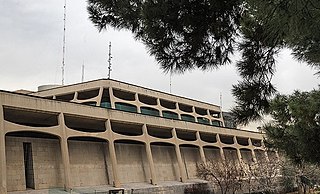 W
WTehran has grown dramatically since Mohammad Khan Qajar chose it as the capital of the Qajar dynasty in 1796. Despite the occurrence of earthquakes during the Qajar period and before, some buildings still remain from Tehran's era of antiquity. However, most of Tehran's historic architecture has been obliterated by the wave of hasty modernization that swept through the capital over the last 40 to 50 years. Of the eight city gates of old Tehran, none remain today. The Qajar culture flowered into a mature form of vernacular architecture, and many relics today remain of this tradition. Most, however, are government offices and residences of the royal elite. The "Kushak" of Ahmad Shah in the Niavaran Palace Complex is an example of this tradition.
 W
WLocated in Tehran, beside Laleh Park, and founded in 1976, the Carpet Museum of Iran exhibits a variety of Persian carpets from all over Iran, dating from the 16th century to the present.
 W
WThe City Theater is a performing arts complex in Tehran, the capital of Iran. This complex is considered as the main outlet of Iran artistic theater. It was built with the initiative of Shahbanu Farah Pahlavi under the rule of Mohammad Reza Pahlavi, the last Shah of Iran.
 W
WThe culture of Tehran concerns the arts, music, museums, festivals, many Persian entertainments and sports activities in Tehran, the capital city of Iran. Iranian festivals are held throughout the year by the people of Tehran, which can be attractive to tourists.
 W
WThe Hosseinieh Ershad or Hosseiniyeh Ershad is a non-traditionalist religious institute established by Nasser Minachi in Tehran, Iran. It was closed for a time by the Pahlavi government in 1972. The institute is housed in a large, domed hall, and is used for lectures on history, culture, society, and religion. The facility also includes a large public library, where most of its users are college students.
 W
WMalek National Museum and Library is a museum and national library in Tehran, Iran. Malek National Library and Museum Institution (MNLMI) is the first private museum of Iran and one of the six large libraries holding exquisite manuscripts. The MNLMI collection is a rich trove of the best manuscripts and Iranian historical artworks. The Institution is located in the historical precinct of “Bagh-e Melli” that is considered the cultural-historical center of Tehran. The MNLM visitors include a large number of university students and researchers, as well as tourists who enjoy its library and museum facilities. It is one of the biggest libraries of precious manuscripts in Iran, built by Hadji Hussein Agha Malek, at the time the richest man in Iran. He built it in a traditional Persian architecture style. One of the biggest contributors is Esat Malek Malek, Hadji Hussein Agha Malek's eldest daughter, who contributed to the museum's development.
 W
WMinistry of Interior Hall, is a concert hall in Tehran. Its one of the most important concert halls in Tehran.
 W
WThe National Library of and Aichives Iran (NLI) is located in Tehran, Iran, with several branches scattered throughout the city.
 W
WThe Vahdat Hall, formerly the Roudaki Hall, is a performing arts complex in Tehran, Iran.